#Mithradates II
Text
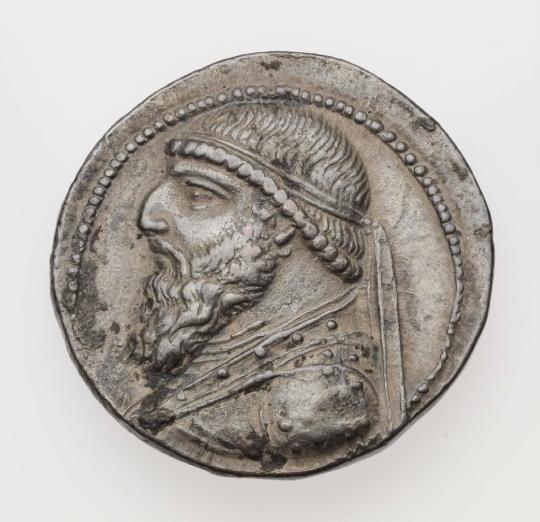

~ Tetradrachm of Kingdom of Parthia with bust of Mithradates II.
Culture: Greek
Period: Hellenistic Period
Date: 123–88 B.C.
Mint: Parthia (Kingdom), Seleukeia-on-the-Tigris (Babylonia)
Medium: Silver
#ancient#ancient art#history#museum#archeology#ancient history#greek#archaeology#ancient greek#tetradrachm#kingdom of Parthia#Mithradates ii#Hellenistic#parthia#babylon#Babylonia#silver#ancient currency#123 b.c.#88 b.c.
338 notes
·
View notes
Photo

Kingdom of Parthia: Mithradates II. AE, Uncertain (Hekatompylos?) mint https://www.vauctions.com/Event/LotDetails/586639/Kingdom-of-Parthia-Mithradates-II-AE-Uncertain-Hekatompylos-mint https://www.instagram.com/p/Coz2bkLq-GW/?igshid=NGJjMDIxMWI=
0 notes
Photo
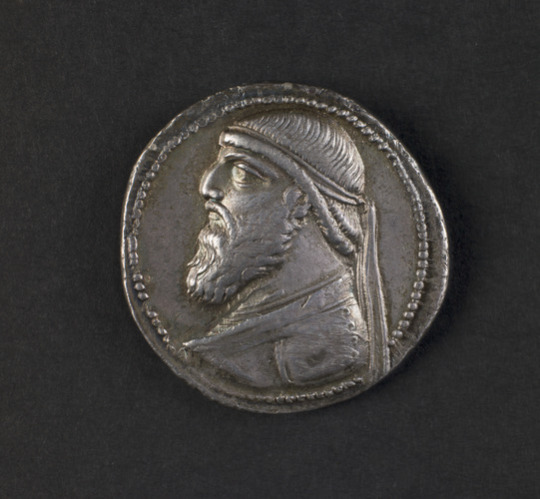
Tetradrachm with Bust of Mithradates II, Greek, 121–91 BC, Saint Louis Art Museum: Ancient Art
https://www.slam.org/collection/objects/19083/
21 notes
·
View notes
Text
The Image of Hercules with infant Telephos
The statue of Heracles with infant Telephos which is located in the Chiaramonti Museum is the oldest example of this image, having been created in the 2nd century A.D. as a copy of a Greek statue of the 4th century A.D.

This statue, which was discovered in Rome in the vicinity of Campo de’ Fiori, was one of the first sculptures to come into the Vatican collections. Pope Julius II (1503-1573) exhibited it in the Courtyard of the Statues in the Belvedere. The presence of Heracles, in fact, leads us back to the mythological origins of Rome and alludes in particular to the victory of the Romans over the tribes of ancient Latium. The god Heracles, with his club and lion skin, holds his son Telephos in his arms. Telephos is the son born to Heracles by the priestess Auge who was forced to abandon the child in the mountains of Arcadia, where he was nourished by a doe until he was rescued by his father. Telephos became King of Mysia and one of the leading characters in a rich and complex mythology that sees him involved in the Greek expedition against Troy. This statue is a second century A.D. copy, probably of a Late Hellenistic original.

In The Poison King: The Life and Legend of Mithradates: Rome's Deadliest Enemy, Adrienne Mayor states that "Recent analysis of portraiture in contemporary coins and sculpture suggests that the model for the little boy was none other than Mithradates!"
According to her Pompey the Great recognized the likeness of the baby Telephus to Mithradates and took it to Rome after defeating Mithradates in 63 BC (Mayor): "Pompey installed this Hercules statue in his Theater on the Field of Mars in Rome. The statue was discovered in 1507 in Campo dei Fiori, near the ruins of Pompey's Theater."

After its rediscovery in 1507, the statue became an inspiration for the artists of its time leading to many engravings of the image belonging to the 16th century. The emperor Commodus was pictured in the same pose multiple times in the Speculum Romanae Magnificentiae (published c. 1540-80), inspiring slightly different copies which dates extend into the 18th century. I am not sure if I have acquired all of these copies since there are so many. But here are some;

Emperor Commodus as Hercules, Attributed to Jacob(us) Bos, 1550
This print comes from the museum’s copy of the Speculum Romanae Magnificentiae (The Mirror of Roman Magnificence) The Speculum found its origin in the publishing endeavors of Antonio Salamanca and Antonio Lafreri. During their Roman publishing careers, the two foreign publishers - who worked together between 1553 and 1563 - initiated the production of prints recording art works, architecture and city views related to Antique and Modern Rome. The prints could be bought individually by tourists and collectors, but were also purchased in larger groups which were often bound together in an album. In 1573, Lafreri commissioned a title page for this purpose, which is where the title ‘Speculum Romanae Magnificentiae’ first appears. Lafreri envisioned an ideal arrangement of the prints in 7 different categories, but during his lifetime, never appears to have offered one standard, bound set of prints. Instead, clients composed their own selection from the corpus to be bound, or collected a group of prints over time. When Lafreri died, two-third of the existing copper plates went to the Duchetti family (Claudio and Stefano), while another third was distributed among several publishers. The Duchetti appear to have standardized production, offering a more or less uniform version of the Speculum to their clients. The popularity of the prints also inspired other publishers in Rome to make copies however, and to add new prints to the corpus.
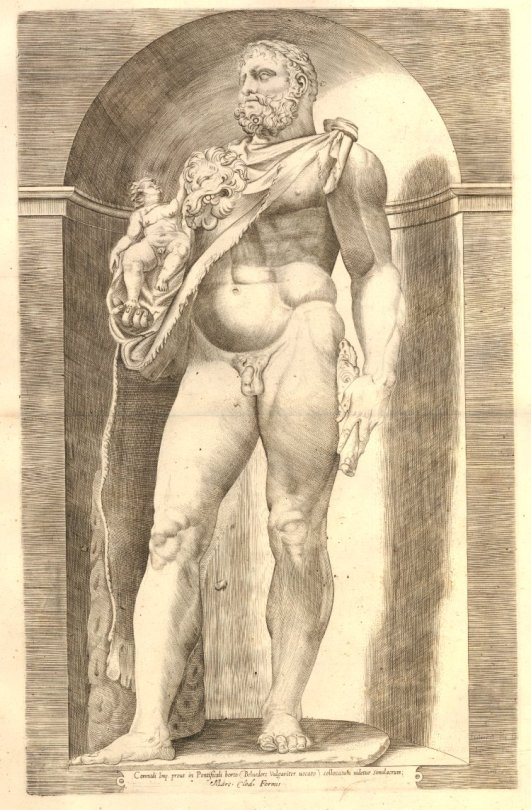
The Emperor Commodus dressed as Hercules, after an antique statue placed in a niche in the Belvedere, Anonymous, 1587-89

Hercules and Telephos, Hendrick Glotzius, c. 1592

Emperor Commodus in the Papal gardens, after the engraving of Jacob(us) Bos, ca. 1614

Heracles with infant Telephos, Sir Nicolas Dorigny, 1704
Of course, the statue’s artistic interpretations were not limited to engravings. Here is a terracotta reproduction by Stefano Maderno, dated 1620.

And lastly, I would like to add a very interesting photograph by James Anderson dating 1859 and bearing the name Hercule avec le jeune Ajax. It is a photograph of the sculpture we know today but with the father's genitals covered and the club still intact.

Image Sources:
1. http://www.museivaticani.va/content/museivaticani/en/collezioni/musei/museo-chiaramonti/ercole-e-telefo-bambino.html
2. https://www.flickr.com/photos/askrobotov/48448640202/
3. https://www.flickr.com/photos/hen-magonza/7361370584/
4. https://www.metmuseum.org/art/collection/search/402935
5. https://www.britishmuseum.org/research/collection_online/collection_object_details.aspx?assetId=340981001&objectId=3064979&partId=1
6. https://www.artic.edu/artworks/112044/hercules-and-telephos-plate-two-from-three-famous-antique-sculptures
7. http://speculum.lib.uchicago.edu/search.php?search%5B0%5D=commodus&searchnode%5B0%5D=all&result=7
8. https://www.royalacademy.org.uk/art-artists/work-of-art/heracles-with-infant-telephos-kown-as-commodo-imperatore-or-ercole-romano
9. shorturl.at/fgDJ9
10. http://www.getty.edu/art/collection/objects/218216/james-anderson-hercule-avec-le-jeune-ajax-vatican-british-1859/?dz=0.4745,0.4745,0.74
#greek art#roman art#hellenistic#hercules#herakles#telephos#herakles and telephos#vatican#musei vaticani#vatican museums#sculpture
62 notes
·
View notes
Text
“Magnopolis was the name he [Pompey] gave to a city which have been begun by Mithradates under the name Eupatoria and which he merely completed“ (Robin Seager, “Pompey the Great: A Political Biography”)
The funny thing is that I went to school in the town of Eupatoria - other Eupatoria, the one in Tauris Crimea - which was named in honor of the same Mithridates VI Eupator by Catherine II, herself nicknamed The Great, thus paralleling Pompey. So, basically, I lived inside a remake.
2 notes
·
View notes
Text
MITHRADATES II the Great PARTHIA King 120BC Silver Greek Coin NGC MS i68150
MITHRADATES II the Great PARTHIA King 120BC Silver Greek Coin NGC MS i68150

See it here here: https://www.ebay.com/itm/MITHRADATES-II-the-Great-PARTHIA-King-120BC-Silver-Greek-Coin-NGC-MS-i68150/352314175333?hash=item52078faf65:g:WbgAAOSwTPRaty1I
eBay Store: http://stores.ebay.com/Authentic-Ancient-Greek-Roman-Coins
eBay Feedback
Educational Videos about ancient coin collecting and investing here:
https://www.youtube.com/playlist?list=PL3dOqeLcLHYna6jl4_W5brq7ydWkewBdv
SUBSCRIBE to my YouTube channel:
https://www.youtube.com/user/trustedancientcoins
Articles and Videos about ancient coins
Other Social Media Profiles and Sites
Twitter
Google+
Facebook
Every Item Comes with a Lifetime Guarantee of Authenticity and Individually Numbered Certificate of Authenticity
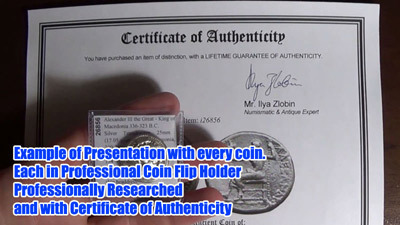
Own a piece of history today, guaranteed!

POST BY: Mr. Ilya Zlobin, world-renowned expert numismatist, enthusiast, author and dealer
of authentic ancient Greek, ancient Roman, ancient Byzantine, biblical world coins & more.
The following blog post MITHRADATES II the Great PARTHIA King 120BC Silver Greek Coin NGC MS i68150 was originally published to The Blog About Historical Ancient Coins
from Authentic Ancient Greek Roman Coins - Feed http://www.authenticancientgreekromancoins.co.technology/2018/03/25/mithradates-ii-the-great-parthia-king-120bc-silver-greek-coin-ngc-ms-i68150/
via http://www.authenticancientgreekromancoins.co.technology
0 notes
Text
MITHRADATES II the Great PARTHIA King 120BC Silver Greek Coin NGC MS i68150
MITHRADATES II the Great PARTHIA King 120BC Silver Greek Coin NGC MS i68150

See it here here: https://www.ebay.com/itm/MITHRADATES-II-the-Great-PARTHIA-King-120BC-Silver-Greek-Coin-NGC-MS-i68150/352314175333?hash=item52078faf65:g:WbgAAOSwTPRaty1I
eBay Store: http://stores.ebay.com/Authentic-Ancient-Greek-Roman-Coins
eBay Feedback
Educational Videos about ancient coin collecting and investing here:
https://www.youtube.com/playlist?list=PL3dOqeLcLHYna6jl4_W5brq7ydWkewBdv
SUBSCRIBE to my YouTube channel:
https://www.youtube.com/user/trustedancientcoins
Articles and Videos about ancient coins
Other Social Media Profiles and Sites
Twitter
Google+
Facebook
Every Item Comes with a Lifetime Guarantee of Authenticity and Individually Numbered Certificate of Authenticity

Own a piece of history today, guaranteed!

POST BY: Mr. Ilya Zlobin, world-renowned expert numismatist, enthusiast, author and dealer
of authentic ancient Greek, ancient Roman, ancient Byzantine, biblical world coins & more.
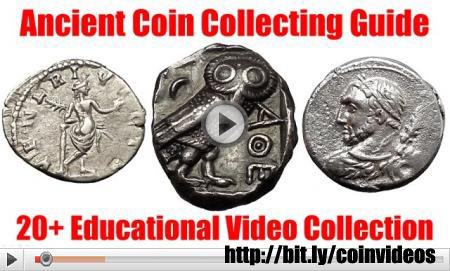
https://www.youtube.com/watch?v=_OghpYB823Q&list=PL3dOqeLcLHYna6jl4_W5brq7ydWkewBdv

March 25, 2018 at 04:04AM
from Ancient Coin Investing and Collecting www.trustedcoins.com - Feed http://www.ancientcoininvesting.com/2018/03/25/mithradates-ii-the-great-parthia-king-120bc-silver-greek-coin-ngc-ms-i68150/
via http://www.ancientcoininvesting.com
from Fastchariot Rareancientcoins https://fastchariotcoins.tumblr.com/post/172236483340
via https://fastchariotcoins.tumblr.com/
0 notes
Text
MITHRADATES II the Great PARTHIA King 120BC Silver Greek Coin NGC MS i68150
MITHRADATES II the Great PARTHIA King 120BC Silver Greek Coin NGC MS i68150

See it here here: https://www.ebay.com/itm/MITHRADATES-II-the-Great-PARTHIA-King-120BC-Silver-Greek-Coin-NGC-MS-i68150/352314175333?hash=item52078faf65:g:WbgAAOSwTPRaty1I
eBay Store: http://stores.ebay.com/Authentic-Ancient-Greek-Roman-Coins
eBay Feedback
Educational Videos about ancient coin collecting and investing here:
https://www.youtube.com/playlist?list=PL3dOqeLcLHYna6jl4_W5brq7ydWkewBdv
SUBSCRIBE to my YouTube channel:
https://www.youtube.com/user/trustedancientcoins
Articles and Videos about ancient coins
Other Social Media Profiles and Sites
Twitter
Google+
Facebook
Every Item Comes with a Lifetime Guarantee of Authenticity and Individually Numbered Certificate of Authenticity
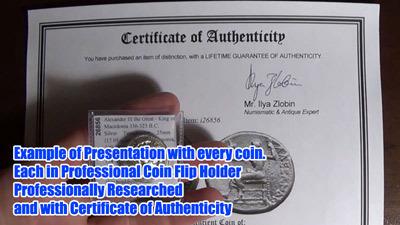
Own a piece of history today, guaranteed!

POST BY: Mr. Ilya Zlobin, world-renowned expert numismatist, enthusiast, author and dealer
of authentic ancient Greek, ancient Roman, ancient Byzantine, biblical world coins & more.
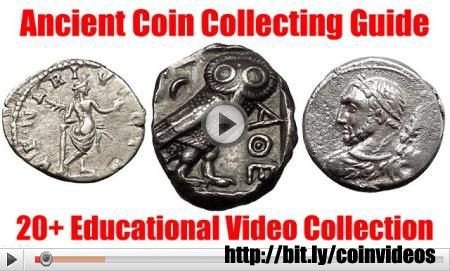
https://www.youtube.com/watch?v=_OghpYB823Q&list=PL3dOqeLcLHYna6jl4_W5brq7ydWkewBdv

March 25, 2018 at 04:04AM
from Ancient Coin Investing and Collecting www.trustedcoins.com - Feed http://www.ancientcoininvesting.com/2018/03/25/mithradates-ii-the-great-parthia-king-120bc-silver-greek-coin-ngc-ms-i68150/
via http://www.ancientcoininvesting.com
0 notes
Text
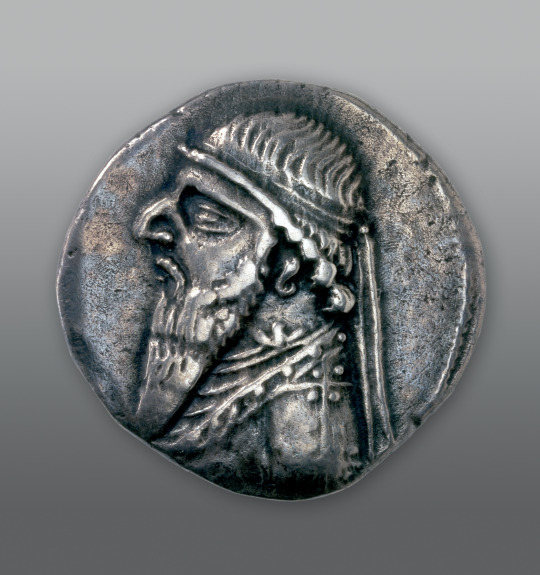
~ Mithridates II Rhagae, drachma.
Culture/Place of origin: Parthian empire
Date: ca. 123-88 B.C.
Medium: Silver, struck
#ancient#ancient art#ancient coin#ancient currency#ancient near eastern#ancient history#history#archaeology#museum#numismatics#near eastern#parthian#parthian Empire#Mithradates II#silver#ca. a.d. 123#ca. a.d. 88#2nd century#1st century#drachma
202 notes
·
View notes
Photo

Mithradates II. 121-91 BC. AR Drachm. Ekbatana mint, 4.06g, 21mm, ABOUT EF , https://ebay.us/X8HoSP https://www.instagram.com/p/B50P946AuXy/?igshid=6qfdyxp5yjm2
0 notes
Photo
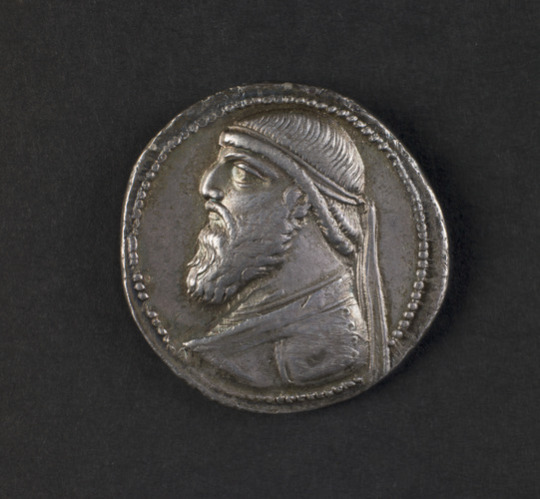
Tetradrachm with Bust of Mithradates II, Greek, 121–91 BC, Saint Louis Art Museum: Ancient Art
https://www.slam.org/collection/objects/19083/
11 notes
·
View notes
Text
Pompey: MiLiTaRy gENiUs first consulship - civil war pt.1 first consulship - returning from the 3rd Mithridatic war
70 BC - FIRST CONSULSHIP
🌇In 70 bc, Pompey and Crassus became consuls
Remember he was very underage and
🌇Their main feat was that they repealed basically everything Sulla did
🌇The tribunes’ powers were fully restored; criminal juries were divided between senators and wealthy non-senators; and, for the first time since Sulla, two censors—both supporters of Pompey—were elected, who purged the Senate and, in compiling the registers, at last fully implemented the Italians’ citizenship - possibly angered urban poor
🌇The system then continued to rely essentially on mos majorum and auctoritas —potent forces in the status society of the Roman Republic. The solid bases of law and power that Sulla had tried to give it had been surrendered. MAKES IT EASIER TO CORRUPT
🌇In the ‘Life of Crassus’, Plutarch wrote that the two men differed on almost every measure, and by their contentiousness rendered their consulship "barren politically and without achievement, except that Crassus made a great sacrifice in honour of Hercules and gave the people a great feast and an allowance of grain for three months”
🌇Towards the end of their consulship, when the differences between the two were increasing, a man declared that Jupiter told him, to "declare in public that you should not suffer your consuls to lay down their office until they become friends".
🌇The people called for a reconciliation. Pompey did not react, but Crassus "clasped him by the hand" and said that it was not humiliating for him to take the first step of goodwill. aw
🌇Plutarch wrote that Pompey "had determined to restore the authority of the tribunate, which Sulla had overthrown, and to court the favour of the many" and commented that, "There was nothing on which the Roman people had more frantically set their affections, or for which they had a greater yearning, than to behold that office [the tribuneate] again." Through the repeal of Sulla's measures against the plebeian tribunate Pompey gained the favour of the people.J
67 BC - MITHRADATES AND PIRATES
Pirates
🎃In 67bc, Pompey did lots of military things like how a military person does
🎃 PIRATES: A large network of pirates coordinated operations over wide areas with large fleets. According to Cassius Dio, many years of war contributed to this because many war fugitives joined them. Pirates were more difficult to catch or break up than bandits. The pirates pillaged coastal fields and towns
🎃So he was given the Lex Gabinia
🎃This was proposed by Aulus Gabinius, tribune of the Plebs.
🎃It granted Pompey extraordinary proconsular powers in any region within 50 miles of the Mediterranean Sea and was introduced to allow Pompey to deal with pirates that were patrolling the Mediterranean Sea and preventing grain from reaching Rome.
🎃 He was allowed to have 200 ships, levy as many soldiers and oarsmen as he needed and collect as much money from the tax collectors and the public treasuries as he wished. The use of treasury in the plural might suggest power to raise funds from treasures of the allied Mediterranean states as well.
🎃Such sweeping powers were not a problem because comparable extraordinary powers given to Creticus to fight piracy in Crete in 74 BC provided a precedent.
🎃 Cassius Dio claimed that Gabinius "had either been prompted by Pompey or wished in any case to do him a favour … and … He did not directly utter Pompey's name, but it was easy to see that if once the populace should hear of any such proposition, they would choose him."
🎃Plutarch described Gabinius as one of Pompey's intimates and claimed that he "drew up a law which gave him, not an admiralty, but an out-and‑out monarchy and irresponsible power over all men"
the third mithradatic war
🏮Mithradates was still a huge big huge huge problem, yes he was.
🏮 Lucullus was conducting the Third Mithridatic War (73–63 BC) against Mithridates VI the king of Pontus and Tigranes the Great, the king of Armenia. He was successful in battle; however, the war was dragging on and he opened a new front (Armenia)
🏮In Rome Lucullus was accused of protracting the war for ‘the love of power and wealth’ and of taking from royal palaces as if he had been sent, 'not to subdue the kings, but to strip them.’ Some of the soldiers were disgruntled and were incited by Clodius not to follow their commander. MUTINY
🏮Because of this, Mithradates won back some territory
🏮Pompey was sent to help, given the Lex Manilia
🏮It gave Pompey command of the forces and the areas of operation of Lucullus and in addition to this, Bithynia, which was held by Acilius Glabrio.
🏮It commissioned him to wage war on Mithridates and Tigranes.
🏮 It allowed him to retain his naval force and his dominion over the sea granted by the lex Gabinia.
🏮Therefore, Phrygia, Lycaonia, Galatia, Cappadocia, Cilicia, Upper Colchis, Pontus and Armenia as well as the forces of Lucullus were added to his command.
🏮Plutarch noted that this meant the placing of Roman supremacy entirely in the hands of one man. The optimates were unhappy about so much power being given to Pompey and saw this as the establishment of a tyranny.
🏮They agreed to oppose the law, but they were fearful of the mood of the people. Only Catulus spoke up. The law was passed.The law was supported by Julius Caesar and justified by Cicero in his extant speech Pro Lege Manilia
🏮According to Cassius Dio, while this was happening, Pompey was preparing to sail to Crete to face Metellus Creticus (see campaign against the pirates).
🏮Lucullus was incensed at the prospect of his replacement by Pompey. The outgoing commander and his replacement traded insults. Lucullus called Pompey a "vulture" who fed from the work of others.
🏮Lucullus was referring not merely to Pompey's new command against Mithridates, but also his claim to have finished the war against Spartacus
An overview from wiki about what Pomps did:
The Roman province of Bithynia was enlarged and became the province of Bithynia et Pontus (Pompey added the western part of Pontus).
Galatia was divided between Deiotarus ruling the Tolistobogii in the west, Domnilaus ruling the Tectosages in the middle, Brogitarus ruling the Trocmi in the east, and Pylaemenes ruling Paphlagonia in the north.
Capadocia was restored to Ariobarzanes (Pompey actually increased his lands).
The Roman province of Cilicia was also enlarged (Pompey added Pamphylia and several other inland areas). Cilicia kept its name.
The coastal strip from Gaza to the gulf of Issus was formed into a new Roman province. The province of Syria.
Deiotarus (the ruler of the Tolistobogii) was given an extensive kingdom east of Bithynia et Pontus; consisting of the eastern part of Pontus and Lesser Armenia.
Colchis was given to Aristarchus.
Commagene was given to Antiochus.
Osrhoene was given to Abgar.
The Amanus range was given to Tarcondimotus.
Tigranes was allowed to remain king of Armenia.
Sophene became independent of Armenia (but a client of Rome).
Gordyene became a client of Rome.
Hyrcanus was reinstated as ruler a high priest of Judaea (although much of the power in Judaea passed into the hands of Antipater).
his return from the east and cicero - 63 bc
🦀Pompey went back to Amisus. Here he found many gifts from Pharnaces and many dead bodies of the royal family, including that of Mithridates. Pompey could not look at Mithridates' body and sent it to Sinope.
🦀Before he departed for Rome Pompey paid his army, the sum distributed amounted, we are told, to 16,000 talents (384,000,000 sesterces). He then travelled in greater pomp.
🦀On his way to Italy he went to Mytilene on the island of Lesbos. He decided to build a theatre in Rome modelled on that of this city. In Rhodes he listened to the sophist philosophers and gave them money. He also gave rewards to philosophers in Athens and gave the city money towards its restoration (it had been damaged by Sulla during the First Mithridatic War).
🦀In Rome there were rumours that Pompey would march his army against the city and establish a monarchy. Crassus secretly left with his children and money. Plutarch thought that it was more likely he did this because he wanted to give credibility to the rumours rather than through genuine fear.
🦀However, Pompey disbanded his army when he landed in Italy. He was cheered by the inhabitants of the cities he passed on his way to Rome and many people joined him. Plutarch remarked that he arrived in Rome with such a large crowd that he would not have needed an army for a revolution.
🦀In the Senate Pompey was probably equally admired and feared. On the streets he was as popular as ever. His eastern victories earned him his third triumph, which he celebrated on his 45th birthday in 61 BC, seven months after his return to Italy.
🦀Plutarch wrote that it surpassed all previous triumphs. It took place over an unprecedented two days. Much of what had been prepared would not find a place and would have been enough for another procession.
🦀Inscriptions carried in front of the procession indicated the nations he defeated (the Kingdom of Pontus, Armenia, Cappadocia, Paphlagonia, Media, Colchis, Caucasian Iberia, Caucasian Albania, Syria, Cilicia, Mesopotamia, Phoenicia, Judaea and Nabataea) and claimed that 900 cities, 1,000 strongholds. 800 pirate ships and 1,000 pirates were captured and that 39 cities were founded.
🦀Some also claimed that his conquests were adding 85 million drachmas to the 30 million drachmas of the public revenues from taxes and that he brought 20,000 drachmas in silver and gold.
🦀The captives led in the triumph were the leaders of the pirates, the son of Tigranes the Great with his wife and daughter, a wife of Tigranes the Great, a sister and five children of Mithridates VI, Aristobulus II, the king of the Jews, and hostages from the Caucasian Albanians, the Caucasian Iberians and the king of Commagene.
🦀The tribune Rullus wanted to make a land bill to give the poor land - yet Cicero spoke out agaisnt it.
🦀This is most likely because Cicero knew it would make Pompey trying to give his veterans land harder.
🦀Cicero exaggerated the power which the land commission would be given by the bill. He described the commission as "... ten Kings of the treasury, of the revenues, of all provinces, of the whole Republic, of the kingdoms allied with us, the free nations confederate with us - in fact, ten Lords of the world are to be set up under the pretence and name of an agrarian law."
0 notes
Text
King MITHRADATES II 123BC Horse PARTHIA Ancient Greek Type Coin i44153
http://dlvr.it/RMVKF8
0 notes